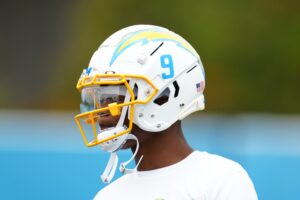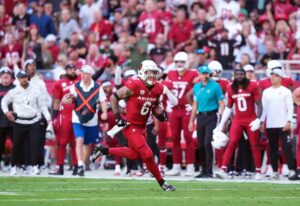In last week’s 38-13 blowout loss to the Green Bay Packers, Eli Manning played better than he has been for the majority of this season. Looking at the stat recap, it would be hard to imagine this, but all night the Ole Miss product kept throwing dime passes that his receivers just couldn’t hang on to; including two easy catches in the end zone. The two-time Super Bowl MVP reminded us he still has some gas in the tank and is ready for another playoff run if the team’s offense can resolve some issues. The only problem is, he is approaching the last few seasons of his career, which puts the New York Giants in a “win now” position. After just turning age 36 on January 3rd, concerns arise regarding how much longer Eli is going to be able to play in the NFL. The final saga for Manning is approaching, and now is the time to prove the critics wrong and truly solidify his legacy.
Eli Manning: The Final Saga
Time Is of the Essence
During Monday’s press conference, general manager Jerry Reese spoke out on the matter, telling reporters, “We always think about every position. But Eli is 36, and we have started to think about who is the next quarterback, and who is in line, so we will look into that as we move into the offseason.” After finishing his 13th season, Eli is still under contract for another three years and looks to be playing until age 39, just like his older future Hall of Fame brother. In recent years it’s been shown that veteran quarterbacks in their late 30’s have been successful in the back nine of their career. Players such as Drew Brees, Tom Brady, and Peyton Manning are some, to name a few. With this trend, it wouldn’t come as a surprise if Manning’s performance remained steady for the rest of his time in the league.
After coming off arguably his best season in 2015, Eli’s level of play in 2016 was somewhat lackluster and disappointing. Given all the off-season hype surrounding the new wide receiver trio of Odell Beckham, Sterling Shepard, and Victor Cruz, many thought Eli was guaranteed a 5,000-yard passing season. This surely wasn’t the case, but how much of this can actually be blamed on the veteran quarterback? The offensive line performed at the worst it has in a while, and Ereck Flowers was nothing more than horrendous at left tackle. Historically it takes most offensive linemen a couple seasons to become great players. Given this information, looking at the draft (especially with the 23rd overall pick) is not the answer to fixing the line in a hurry like Reese and the Giants are looking to do. Rather, focusing on free agency to combat this problem is a much wiser alternative. Resolving this affair would also open up the ground game, which is another key to helping Eli succeed in the future. These last three seasons with Manning under center are going to require team personnel to act quickly and abandon the rebuilding stage before it’s too late.
Building a Lethal Offense
Drafting Sterling Shepard in the second round came as a surprise but ended up being a remarkable selection. Finishing the season with 65 receptions, 683 yards (10.5 average), and eight touchdowns is truly an impressive accomplishment for the rookie out of Oklahoma. The only other rookie wide receiver to top his numbers this year was Michael Thomas, with the help of Drew Brees’ MVP caliber year. Shepard replaced Victor Cruz’s role as the slot receiver and alleviated some of the pressure off Odell Beckham, who has been susceptible to being double-teamed the majority of snaps. With these two leading the receiving corps in New York’s future, Eli Manning shouldn’t have to look much further in regards to wideouts. Despite a poor performance filled with dropped passes by both Beckham and Shepard last week, the pair has an off-season to build even more chemistry and reaffirm they are reliable targets. Eli has the framework in place to take advantage of this lethal duo for the rest of his career.
Aside from wide receivers, the rest of the offense struggles significantly. As previously discussed, the offensive line is the root of all the mishaps on that side of the ball. Without a dominant force up front, the run game will continue to slow the offense down and restrain head coach Ben McAdoo from opening up the playbook. Although the running game looks promising behind Paul Perkins, the rookie out of UCLA, there’s only so many yards a running back can get without getting some decent blocks. The rushing attack also looks to get one of its most dangerous players back, as Shane Vereen is expected to be healthy again by the start of next season. This could be the missing link that really sparks the offense as a whole. Looking at the fact that Vereen was third on the team in receiving yards a year ago, this presents Eli Manning with more opportunities to get the ball out quickly when under pressure. This means fewer forced passes and interceptions when moving the ball downfield, something he struggled with during the 2016 season.
Perhaps the biggest catastrophe for Eli Manning and the offense is the tight end production. Larry Donnell was finally benched, and more snaps were given to Will Tye and Jerell Adams. Although this was a better alternative, neither really stood out enough to take over the starting role. Being a rookie, Adams did perform well and exceed expectations, but still has room for improvement and could work on blocking. Filling this gap is crucial to Eli, as in his best seasons he’s always had a great tight end to dump the ball off to on crucial plays. Because cap space is limited, look for the team to address this problem with the 2017 NFL Draft. For the first time in years, it has an abundance of talent at the position. If the Giants are fortunate enough to have a top prospect fall to them at the 23rd pick, don’t be surprised if Reese and company pick up the phone and select a tight end in the first round for the first time since Jeremy Shockey back in 2002.
Main Photo:






